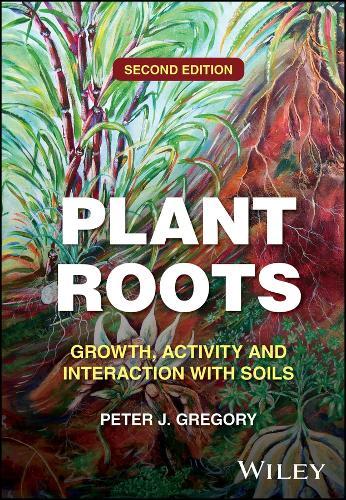Overview
An updated overview of plant root systems, covering their development, growth, interactions with soil, breeding and management Plant Roots draws together information from plant and soil literature to illustrate how roots interact with soil, both to modify it and to obtain from it the resources required for the whole plant to grow. Emphasis is placed on whole plants and root systems, with appropriate references to the growing body of literature on plant molecular and cellular levels. This newly revised and updated Second Edition maintains its balance between introducing the founding ideas and science underlying the topic while covering the most recent updates underpinned by new scientific methods and understanding. The author reviews recent advances in genomics, phenomics, other -omics technologies, computer modelling, and the study of ‘model plants’ such as Arabidopsis thaliana and rice which have led to major advances in understanding how roots grow and function. New crop varieties contributing to increased crop production, especially in nutrient poor and/or water-limited soils, are described together with new ways of managing root systems to improve crop performance and efficiency of resource use. Sample topics discussed in Plant Roots include: The anatomy and growth of primary roots The development and properties of the rhizosphere Heterogeneity of structure, nutrient availability, and microbial communities experienced in field soils Differences in anatomy and morphology between different types (classes) of root and their consequences for activity as absorbers of water and nutrients How crops, forests, natural plant communities and the resources supporting them might be managed more effectively Plant Roots is an essential source of reference aimed at students and professionals who already have some background knowledge of soils and plants and are seeking to understand cutting-edge updates in the field.
Full Product Details
Author: Peter J. Gregory (The Scottish Crop Research Institute)
Publisher: John Wiley & Sons Inc
Imprint: John Wiley & Sons Inc
Edition: 2nd edition
Dimensions:
Width: 17.50cm
, Height: 2.80cm
, Length: 24.60cm
Weight: 0.998kg
ISBN: 9781118949924
ISBN 10: 1118949927
Pages: 464
Publication Date: 09 October 2025
Audience:
Professional and scholarly
,
Professional & Vocational
Format: Hardback
Publisher's Status: Active
Availability: Available To Order

We have confirmation that this item is in stock with the supplier. It will be ordered in for you and dispatched immediately.
Author Information
Peter J. Gregory Professor Emeritus, University of Reading, UK, is internationally known and respected for his work on roots and is the recipient of a Lifetime Achievement Award from the International Society of Root Research.



